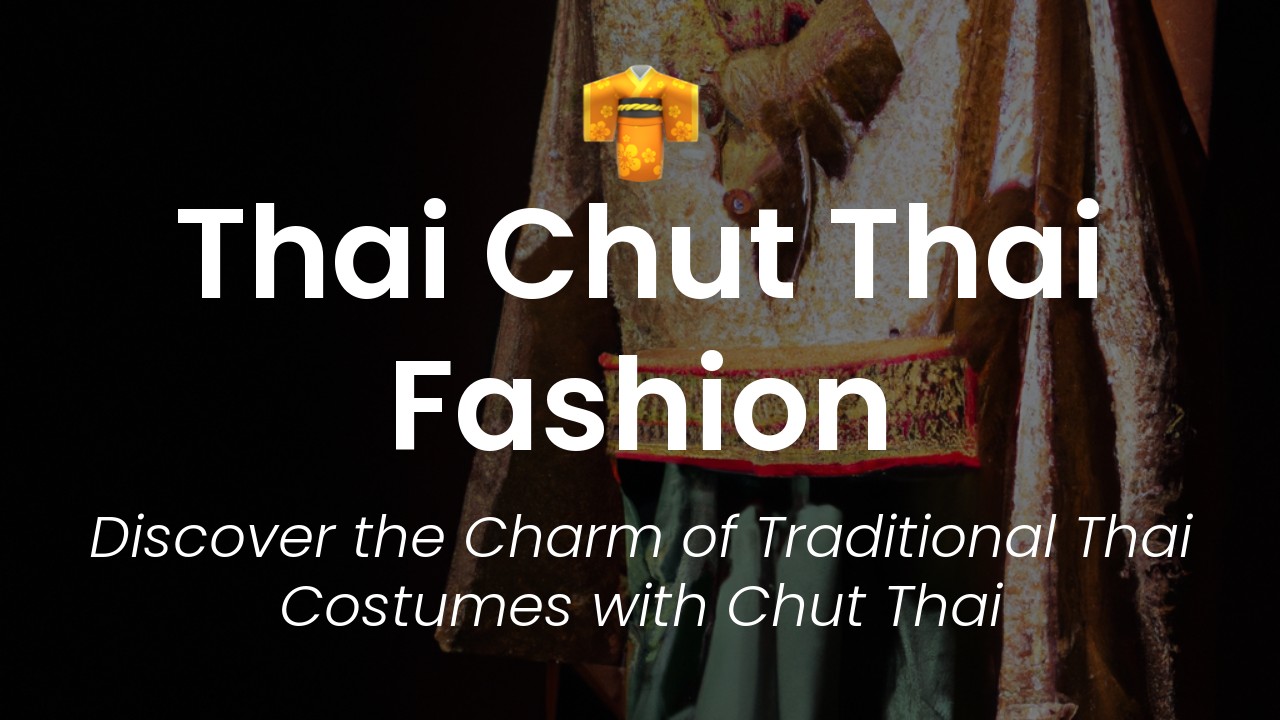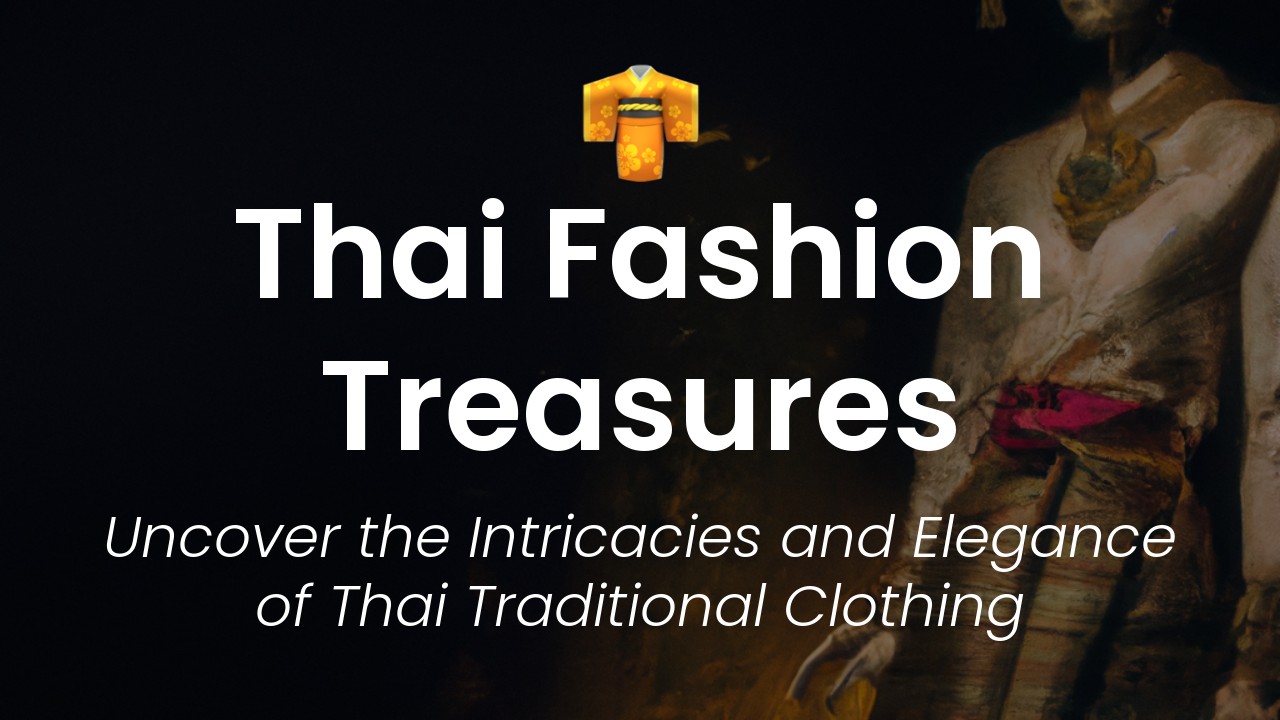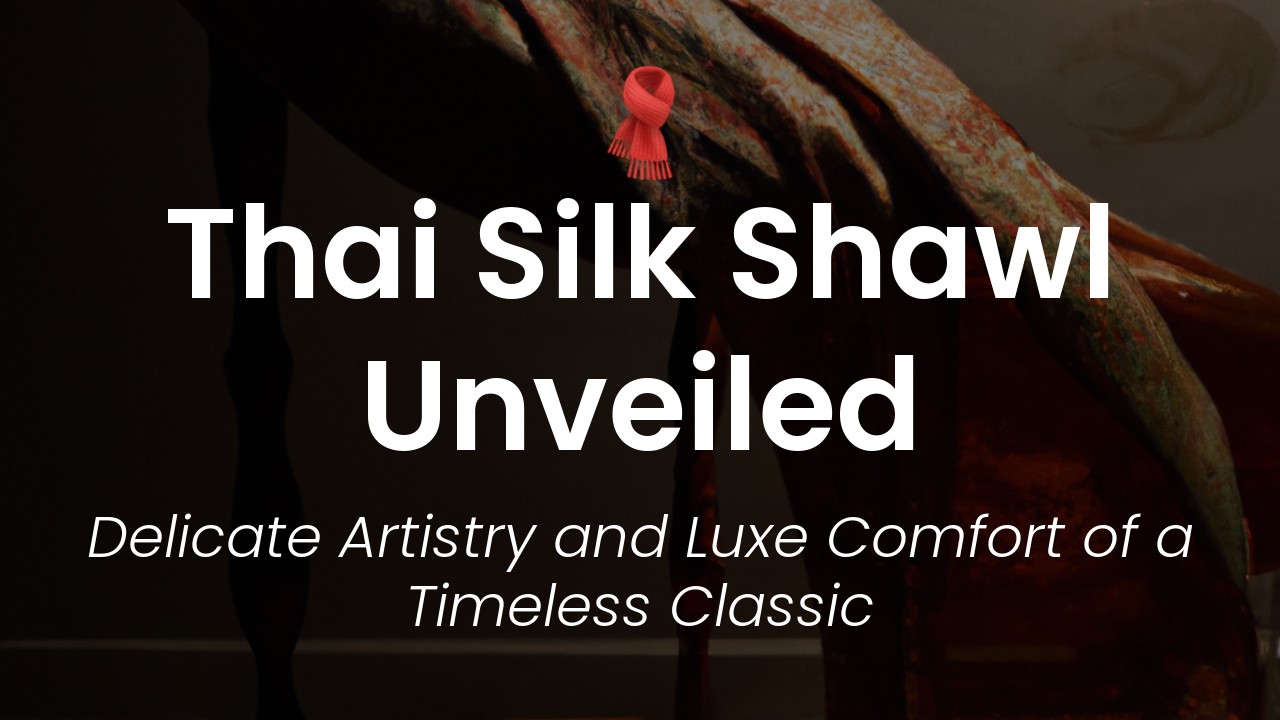Sawadee ka! Welcome to my blog where I share my passion for Thai culture and tourism. As a Thai woman, I take great pride in my country's traditions and craftsmanship. One of the most beautiful and fascinating of these is hand-woven Thai fabrics. These gorgeous textiles are a true reflection of our rich history, culture, and artistry.
If you truly want to experience the unique beauty and authenticity of Thailand, you simply can't miss the opportunity to explore our hand-woven fabrics. These textiles are not only visually stunning, but they also tell a story of our heritage and the passion of our artisans. Every piece is created with love, attention to detail, and exceptional skill.
In this article, I invite you to discover the world of authentic hand-woven Thai fabrics, which can be found throughout the country. From the ancient city of Chiang Mai in the north to Bangkok in the central region and the southern islands of Phuket and Koh Samui, Thai textiles are just waiting to be explored. So, grab your magnifying glass and let me take you on a cultural adventure that will leave you breathless!
Types of Authentic Hand-Woven Fabrics
When it comes to traditional Thai fabrics, you may have heard of silk, cotton, and linen, but did you know that Thailand is home to a wide array of hand-woven fabrics that are specific to certain regions of the country? Here are just a few of the many kinds of authentic hand-woven Thai fabrics you might come across in your travels:
Mudmee
Mudmee is a silk fabric characterized by its bold, geometric patterns and bright colors. It originated in northeastern Thailand and is often used for traditional clothing and accessories like skirts, shawls, and sashes.
Jok Erai
Jok Erai is a woven cotton fabric made using the traditional I-kat technique. The pattern is achieved by dyeing threads before they are woven, resulting in intricate designs that are both sharp and blurred around the edges. Jok Erai is commonly used to make clothing, especially shirts.
Pha Yok
Pha Yok is a hand-woven cotton fabric that is unique to the hill tribes of northern Thailand. It is characterized by its vivid, multicolored stripes and is often used to make long, wrap-around skirts.
Pha Khao Ma
Pha Khao Ma is a silk fabric that originated in central Thailand. It is characterized by its delicate, hand-painted designs, which often feature motifs from Thai folklore and mythology. Pha Khao Ma is usually used to make traditional clothing such as shirts and dresses.
Benefits of Buying Hand-Woven Fabrics
When you visit Thailand, you might be tempted to head straight to the nearest market or souvenir shop to buy some fabric as a souvenir. However, if you're looking for something truly unique and authentic, it's worth seeking out hand-woven fabrics made by local artisans. Here are just a few of the benefits of buying hand-woven Thai fabrics:
1. Unique Products
Hand-woven fabrics are often one-of-a-kind or produced in small quantities, which means that you are buying a truly unique product. You can be assured that the fabric you buy will stand out from the mass-produced textiles that are available in most tourist markets.
2. Support Local Artisans
By buying hand-woven fabrics directly from local artisans, you are supporting traditional crafts and helping to preserve these skills for future generations. You are also directly contributing to the local economy, which is especially important in rural areas where opportunities for employment may be limited.
3. Quality Materials
Hand-woven fabrics are made using high-quality, natural materials such as silk and cotton, which makes them durable and long-lasting. You can be assured that the fabric you buy will be of a higher quality than cheaper, synthetic options.
4. Cultural Connection
Buying hand-woven fabrics is a way to make a cultural connection with the country you are visiting. By owning a piece of traditional Thai fabric, you are not only supporting local artisans, but you are also celebrating the rich history and culture of Thailand.
The Significance of Patterns and Colors
One of the most striking aspects of hand-woven Thai fabrics is their intricate patterns and bold colors. These patterns and colors are often specific to certain regions of Thailand and can carry important cultural and historical significance. Here are a few examples:
Mudmee
The patterns and colors used in Mudmee fabrics are said to represent the natural world and local folklore. The diamond shape is a common motif in Mudmee fabrics and is thought to represent fertility and growth. The bold, bright colors used in Mudmee fabrics are intended to evoke feelings of joy and celebration.
Jok Erai
Jok Erai fabrics often feature complex geometric patterns that are said to represent the interconnectedness of all things. The colors used in Jok Erai fabrics are often earth tones like browns and greens, which reflect the natural surroundings of the northern Thai region where the fabric originated.
Pha Yok
The multicolored stripes used in Pha Yok fabrics are said to represent the different ethnic groups that make up the hill tribes in northern Thailand. Each color has a specific meaning, such as yellow for wealth and red for protection.
Pha Khao Ma
Pha Khao Ma fabrics are often decorated with intricate hand-painted designs that feature traditional Thai motifs like elephants, flowers, and lotus leaves. These designs are meant to bring good luck and are often used in special ceremonies like weddings and funerals.
Where to Find Authentic Hand-Woven Thai Fabrics
If you're looking for authentic hand-woven Thai fabrics, there are a few places you should consider visiting during your trip to Thailand:
1. Local Markets
Many local markets in Thailand sell hand-woven fabrics made by local artisans. Some markets to consider include the Chiang Mai Night Bazaar in northern Thailand and the Chatuchak Weekend Market in Bangkok.
2. Traditional Villages
Visiting traditional villages like Ban Chiang and Baan Ton Tam in northeastern Thailand will give you an opportunity to see local artisans at work and purchase hand-woven fabrics directly from the source.
3. Ethical Fashion Boutiques
If you're looking to support ethical and sustainable fashion practices, you might consider visiting a boutique like Chiang Mai-based Thai Tribal Crafts, which specializes in selling hand-woven fabrics made by indigenous artisans.
What to Consider When Buying Hand-Woven Fabrics
When buying hand-woven Thai fabrics, there are a few things you should keep in mind to ensure that you are getting a high-quality product:
1. Material Quality
Make sure to ask about the materials used in the fabric and look for high-quality natural materials like silk and cotton.
2. Workmanship
Inspect the workmanship of the fabric closely to ensure that it is of a high quality. Look for even weaving and tight stitching.
3. Design Authenticity
If you're looking to buy a specific style of hand-woven fabric, make sure you do your research beforehand so that you can recognize authentic designs and patterns.
How to Care for Your Hand-Woven Thai Fabric Items
Hand-woven fabrics are often delicate and require special care to ensure that they last a long time. Here are a few tips for caring for your hand-woven Thai fabric items:
1. Hand Wash
Hand-washing your fabric items is the best way to avoid damaging the delicate fibers. Use a mild, natural detergent and avoid harsh chemicals.
2. Air Dry
Allow your fabric items to air dry naturally by hanging them up or laying them flat. Avoid putting them in the dryer or exposing them to direct sunlight which can fade the colors.
3. Store Properly
When storing your fabric items, be sure to fold them carefully and keep them in a dry, dark place to avoid exposing them to moisture or sunlight.
Integrating Hand-Woven Fabrics into Your Home Décor
If you're looking to bring a bit of Thai culture into your home décor, hand-woven Thai fabrics are a great way to do so. Here are a few ideas for incorporating these textiles into your design:
1. Throw Pillows
Adding throw pillows covered in hand-woven Thai fabrics is an easy way to add a pop of color and texture to any room.
2. Table Runners
Table runners made from hand-woven Thai fabrics can add a touch of elegance to your dining room or kitchen.
3. Wall Hangings
Hand-woven Thai fabrics can be framed or hung as wall art to create a focal point in any room.
4. Window Treatments
Using hand-woven Thai fabrics as curtains or blinds can add privacy and a unique touch to any room.
In conclusion, hand-woven Thai fabrics are a unique, authentic, and worthwhile souvenir to bring back from your travels. By supporting local artisans and purchasing these high-quality textiles, you are celebrating the rich cultural history of Thailand while also adding a beautiful and unique touch to your home décor.







